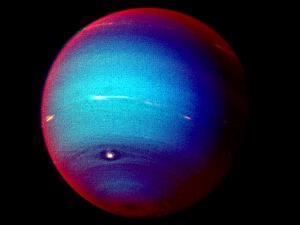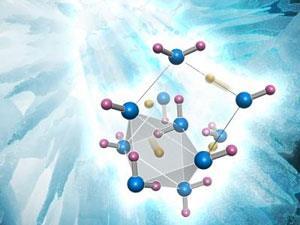
The researchers say that the stray protons might have important implications for the nature of the icy interiors of the gas-giant planets such as Neptune and Uranus. It has been previously proposed that this ice might enter a ‘superionic’ phase in which there are relatively mobile hydrogen ions that can support proton currents and give rise to magnetic fields. The new findings suggest that such a phase might begin to form in a different manner from what was thought, and perhaps at a lower temperature.
‘If the results are correct – and that still needs to be demonstrated – then they have profound consequences for a huge amount of what we know about ice at high density, including its conductivity inside giant planets,’ says John Loveday of the University of Edinburgh, UK, a specialist on high-pressure solid-state physics.
The findings go against prevailing wisdom on how ice behaves under high pressure. The previous assumption was that, as the water molecules – connected in a three-dimensional network of hydrogen bonds – get squeezed closer together, eventually the hydrogen atoms will sit midway between two oxygens. So instead of being covalently bound to one and hydrogen-bonded to the other, it is bound equivalently by both. In this symmetrical arrangement, the water molecules lose their individual integrity.
But Guthrie and colleagues say that some water molecules fall apart well before that symmetrical arrangement is reached. Using neutron diffraction to locate where the protons are situated, they found that above about 13GPa some of these protons break away from their parent molecules and sit in ‘interstitial’ sites: small cavities within the hydrogen-bonded network.
Chaotic ice

‘Current theory doesn't seem to predict this happening,’ he adds. ‘So there's a possibility that we've uncovered some new physics, possibly some quantum effect that allows the protons to “slip from the net” as it were.’ Another possibility is that the results simply won’t stand up, and Loveday reserves judgement. ‘The work is contrary to all expectation as to what will happen,’ he says. ‘That is of course not an argument to reject it, but it’s a reason to be skeptical. This is an extraordinary claim and it requires extraordinary proof.’
To study the high-pressure structure, the Carnegie team had to adapt their diamond-anvil cell to support neutron scattering in the sample. ‘We designed a new cell with about a 100 times larger volume than previous designs,’ says Guthrie. ‘This is still tiny for neutrons, so the second key was to use the high neutron flux of the Spallation Neutron Source at Oak Ridge National Laboratory. It still took around three years to get the technique working.’







No comments yet